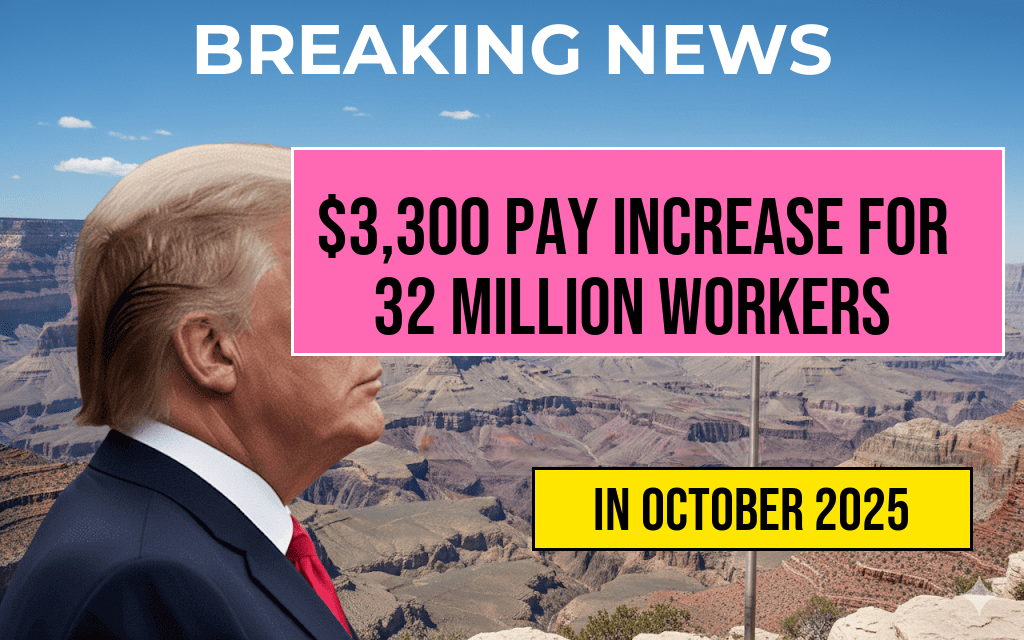A recent study has revealed that implementing a $15 federal minimum wage could lead to an annual pay increase of approximately $3,300 for around 32 million American workers. This significant wage adjustment aims to address the ongoing debate surrounding income inequality and the financial challenges faced by many individuals in the workforce. As inflation continues to rise, many advocates argue that a higher minimum wage is essential for providing a living wage to low-income workers. The study underscores the potential economic impact of such a policy change, suggesting that it could not only benefit workers but also stimulate consumer spending and bolster the economy.
Details of the Study
The analysis, conducted by the Economic Policy Institute (EPI), highlights the potential effects of a federal minimum wage increase on both workers and the broader economy. By raising the minimum wage to $15 per hour, the study estimates that nearly 32 million workers would see a direct boost in their earnings. This increase would significantly enhance the quality of life for these individuals and their families, providing them with greater financial security.
Key Findings
- Increased Earnings: Workers currently earning below $15 per hour would see an average pay increase of $3,300 annually.
- Wage Growth: The wage adjustment could lead to a ripple effect, prompting wage increases for higher-paid workers as employers adjust their pay scales to maintain wage hierarchies.
- Economic Stimulus: The additional income for low-wage workers is likely to result in increased consumer spending, boosting local economies.
Impact on Different Demographics
The study indicates that the proposed wage increase would predominantly benefit women and people of color, who are disproportionately represented in low-wage jobs. Approximately 58% of the workers affected by the wage increase are women, and nearly 42% are people of color. This demographic insight sheds light on the broader implications of the minimum wage debate, particularly in the context of social equity and justice.
State-Level Variations
While the federal minimum wage remains at $7.25 per hour, several states and cities have already adopted higher minimum wages. For example, states like California and New York have implemented minimum wages of $15 or higher, with positive results reported in terms of worker satisfaction and economic growth. The EPI study suggests that a federal standard would help level the playing field for workers across the country.
Challenges and Opposition
Despite the potential benefits outlined in the study, there remains significant opposition to raising the federal minimum wage. Critics argue that a sudden increase could lead to job losses, particularly in small businesses that may struggle to absorb the higher labor costs. Some economists warn that while some workers would benefit, others could face reduced hours or job displacement as companies adjust to the new wage structure.
Policy Considerations
As lawmakers continue to debate the merits of a $15 minimum wage, understanding the economic implications becomes crucial. Proponents emphasize the need for comprehensive policies that address potential job losses by providing support to small businesses and investing in workforce development programs. Balancing the interests of workers and employers will be key in any legislative efforts moving forward.
Conclusion
The findings from the EPI study provide a compelling argument for raising the federal minimum wage to $15, highlighting the potential for significant pay increases for millions of American workers. As discussions on this policy continue, stakeholders must consider the broader economic implications and work towards solutions that benefit both workers and businesses alike.
| Benefit | Estimated Impact |
|---|---|
| Annual Pay Increase | $3,300 for 32 million workers |
| Increased Consumer Spending | Potential economic boost |
| Demographic Equity | 58% of beneficiaries are women |
For additional information on the implications of minimum wage policies, visit the Economic Policy Institute or explore insights from Forbes.
Frequently Asked Questions
What is the estimated annual pay increase for workers if the federal minimum wage is raised to $15?
The study estimates an annual pay increase of $3,300 for approximately 32 million workers if the federal minimum wage is raised to $15.
How many workers would benefit from a $15 federal minimum wage?
About 32 million workers would benefit from the proposed increase to a $15 federal minimum wage.
What is the current federal minimum wage in the United States?
The current federal minimum wage in the United States is $7.25 per hour, which has not changed since 2009.
What are the potential impacts of raising the minimum wage to $15?
Raising the minimum wage to $15 could lead to higher earnings for millions, potentially lifting many workers out of poverty and stimulating the economy through increased consumer spending.
When is the proposed increase to a $15 minimum wage expected to take effect?
The timeline for the proposed increase to a $15 minimum wage varies by legislation and is subject to political approval, but advocates are pushing for it to be implemented as soon as possible.

Leave a Reply